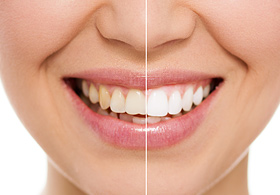Eye Surgery
LASIK is an outpatient surgical procedure lasting fifteen minutes that uses eye drop anesthetic to numb the eye’s surface. LASIK vision correction is effective in treating astigmatism, farsightedness and nearsightedness and enhancements can be easily performed with the extremely accurate, excimer laser.
Some patients with higher ranging myopia and astigmatism (-10.00 and above) may still require further, minor correction to achieve the best and most comfortable vision possible. An enhancement may then be performed and tends to occur with approximately 6 to 15% of patients.
Factors of time and convenience prompt most patients to LASIK both eyes, however, do discuss this with your consulting doctor as your situation will depend on your motivation, eye configuration and the level of correction required for each eye. You can usually return to work the next day, pending the visual demands of your job and your own motivation to return to work.
Potential patients should remain realistic about their surgery and post surgery ‘success’, understanding their vision will not appear clear immediately post procedure. For some, this may be their best possible improvement. Fast visual recovery may be a characteristic of this procedure, however, it can take several months for some patients to experience their ultimate improved vision with LASIK. (Studies highlight that a number of patients’ vision continued to improve up to six months post operatively).
LASIK Success
- Low myopia (0 to 600): 95% to 99%
- Moderate myopia (600 to 1000): 93% to 99%
- High myopia (>1000): 85% to 90%
While statistics aid in the speculation of results, it’s important that patients discuss and review their expectations prior to making a final decision.
The Eyes Have It
Eligible LASIK eye surgery candidates meet the following criteria:
- possess good eye health (i.e. without eye disease such as corneal, significant retinal degeneration, severe dryness of the eye, Keratoconus or any other complicated diseases such as SLE, which affects the eye’s ability to heal)
- are 18 years of age (or above) with stable vision for a minimum of one year
- may have astigmatism/myopia and experience problems using spectacles or contact lenses
- are not pregnant.
Define 20/20 Vision
For many people, 20/20 vision, (post LASIK) is different to 20/20 vision with contact lenses (before LASIK), particularly with gas permeable contact lenses. Images seen through eyes treated with LASIK are often described as not being as ‘crisp’ as those seen through glasses. Ophthalmic circles term this ‘loss of contrast sensitivity’ and it will not affect acuity, but the visual experience is vast enough that the term ‘LASIK 20/20’ has been coined. The majority of patients adjust to the change, however, patients that perform fine and detailed work should carefully consider LASIK against the potential loss of contrast sensitivity.
Note: This data reflects results from a large range of myopia-affected patients (from -1.00 to -14.00) and astigmatism-affected patients (from 1.00 to 4.00). Your chances of achieving 20/20 are greatly improved, pending your contrasting lower degree of nearsightedness/astigmatism).
Note: This information acts as a guide to your possible treatment. Your individual concerns and specific medical history will need to be shared and discussed with your surgeon during your initial consultation.














